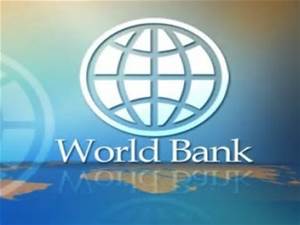The global economy is facing a significant slowdown, projected to grow at its slowest pace since the 2008 financial crisis, excluding periods of outright global recession. This deceleration, primarily driven by escalating trade tensions and heightened policy uncertainty, has led to downward revisions of growth forecasts in nearly 70% of economies worldwide, impacting all regions and income groups. The World Bank’s Global Economic Prospects report paints a concerning picture of a global economy grappling with the consequences of protectionist policies and a volatile geopolitical landscape. While a global recession is not anticipated, the projected growth rate of 2.3% for 2025 represents a substantial decline from initial expectations and signals a persistent weakness in the global economy. If these projections materialize, the average global growth rate for the first seven years of the 2020s will be the lowest recorded since the 1960s, underscoring the severity of the current economic climate.
The slowdown is particularly pronounced in developing economies outside of Asia, which are facing a prolonged period of sluggish growth. This trend, described as a “development-free zone,” reflects a multi-decade decline in growth rates. From an average annual growth of 6% in the 2000s, developing economies experienced a drop to 5% in the 2010s and are now projected to grow at less than 4% in the 2020s. This decline mirrors the trajectory of global trade, which has also experienced a significant contraction over the same period. Simultaneously, investment growth has slowed while debt levels have reached record highs, creating a challenging environment for sustained economic development. This combination of factors paints a worrying picture for the future of developing economies, particularly those outside the dynamic Asian region.
The impact of this slowdown is widespread across developing economies, with nearly 60% expected to experience slower growth in 2025. Average growth for these economies is projected at 3.8% in 2025, rising marginally to 3.9% over 2026 and 2027. This represents a significant drop from the average growth rate of the 2010s and highlights the challenges faced by developing economies in achieving sustainable development goals. Low-income countries, particularly vulnerable to external shocks, are also facing downward revisions to their growth prospects, further exacerbating existing inequalities. Global inflation, fueled by tariff increases and tight labor markets, remains above pre-pandemic levels, adding another layer of complexity to the global economic outlook. These combined pressures create a difficult environment for developing countries striving to improve living standards and reduce poverty.
The consequences of this prolonged slowdown are far-reaching, particularly for developing economies. Slower growth hinders job creation, poverty reduction efforts, and the ability of these countries to close the per capita income gap with advanced economies. Projected per capita income growth in developing economies for 2025 is significantly below the historical average, highlighting the significant impact of the current economic climate on individual livelihoods. Even if developing economies, excluding China, manage to achieve the projected 4% growth rate by 2027, it is estimated that it would take them two decades to return to their pre-pandemic economic trajectory. This underscores the long-term consequences of the current slowdown and the significant challenges faced by developing economies in recovering lost ground.
However, the report also offers a glimmer of hope. A faster-than-expected global rebound is possible if major economies can successfully mitigate trade tensions, thereby reducing policy uncertainty and financial volatility. The analysis suggests that resolving current trade disputes through agreements that halve tariffs could result in a modest but significant boost to global growth over 2025 and 2026. This highlights the potential benefits of international cooperation and the importance of finding common ground in addressing trade-related challenges. By working together to reduce trade barriers, countries can unlock significant economic potential and contribute to a more stable and prosperous global economy.
The report emphasizes the need for proactive measures by developing economies to navigate this challenging global landscape. In the face of rising trade barriers, these countries should prioritize broader liberalization efforts by pursuing strategic trade and investment partnerships and diversifying their trade relationships, including through regional agreements. Given limited government resources and increasing development needs, policymakers should focus on mobilizing domestic revenues, prioritizing fiscal spending for the most vulnerable populations, and strengthening fiscal frameworks. Furthermore, accelerating economic growth requires improving business climates and promoting productive employment by investing in skills development and creating efficient labor markets. By adopting these strategies, developing economies can strengthen their resilience to external shocks and build a more sustainable and inclusive growth path.


